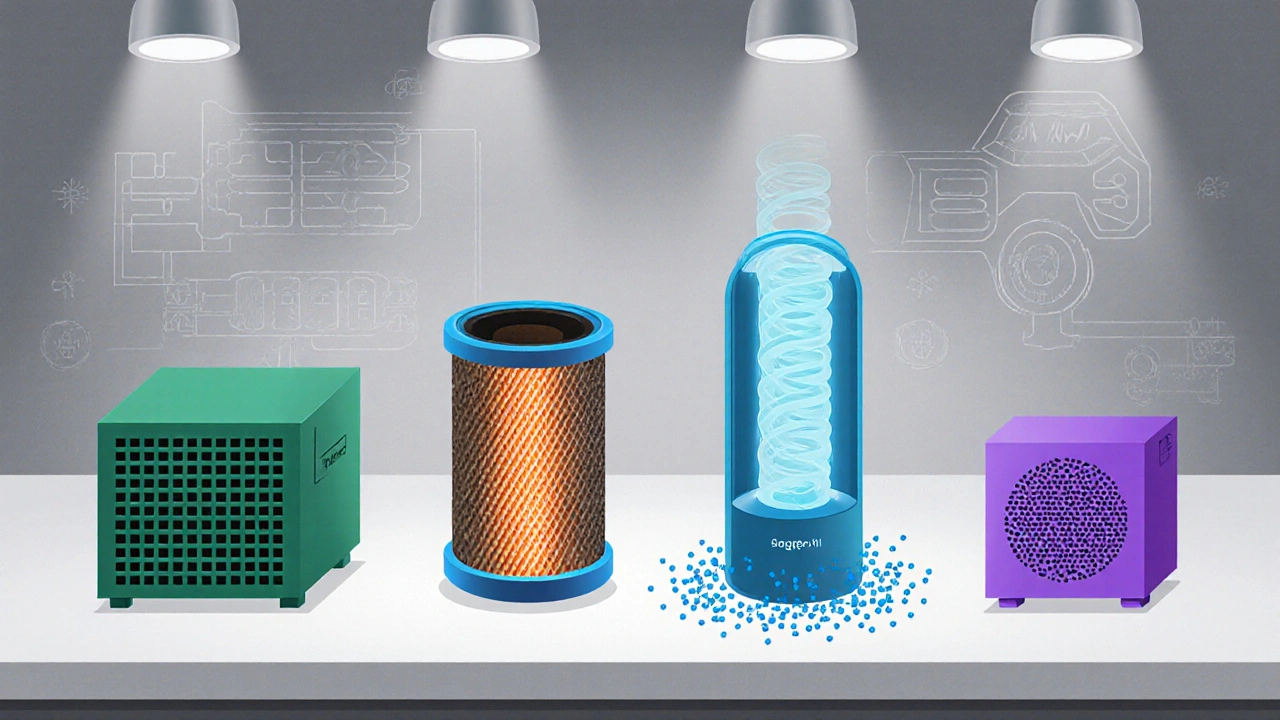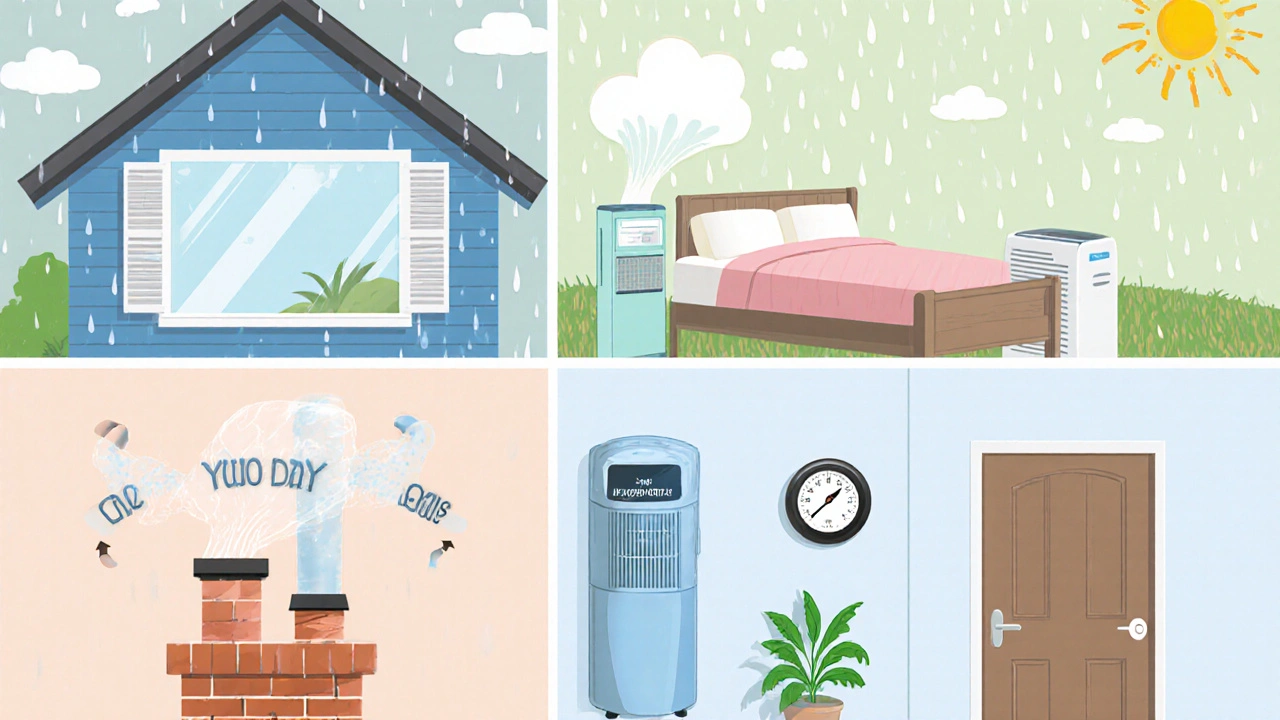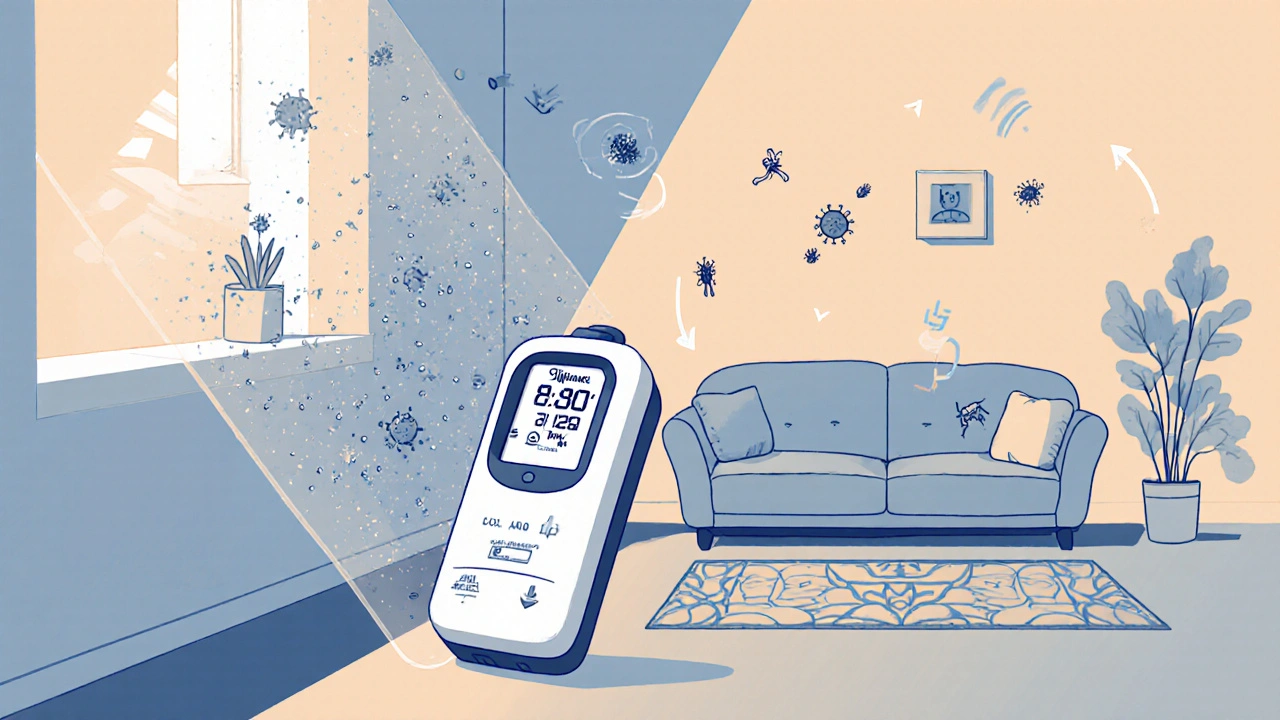Humidity Control Calculator
Optimal Humidity Calculator
Determine your ideal indoor humidity range based on season and room type to minimize allergy triggers like mold and dust mites.
Your optimal humidity range for this room and season:
0 - 0%
Recommended action:
Indoor Air Quality is the measure of how clean and safe the air inside your home feels. Poor indoor air can turn a cozy living room into a sneezing arena, especially when you’re battling allergies 365 days a year. In this guide you’ll learn practical steps-no expensive HVAC overhaul required-to keep the air fresh, the eyes clear, and the sniffles at bay.
What Exactly Is Indoor Air Quality?
Think of indoor air quality (IAQ) as a health score for the air you breathe at home. It considers factors like particle concentration, humidity, chemical vapors, and airflow. When the IAQ score drops, allergens such as pollen, pet dander, and dust mites get a free pass to your lungs.
Allergy Triggers Lurking Inside Your Home
Most people picture outdoor pollen as the biggest enemy, but indoor pollutants often cause more daily irritation. Here’s a quick rundown of the usual suspects:
- Dust Mites: Tiny creatures that love warm, humid corners-think mattresses and upholstered furniture.
- Pet Dander: Microscopic skin flakes that stay airborne for weeks.
- Pollen: Sneaks in on shoes, coats, or through open windows.
- Mold Spores: Thrive in damp basements, bathrooms, and leaky roofs.
- Volatile Organic Compounds (VOCs): Emitted by paints, cleaning products, and furniture.
- Fine Particulate Matter (PM2.5): Tiny particles from cooking, candles, or outdoor smoke that penetrate deep into the lungs.
Assess Your Home’s Air Quality in 3 Simple Steps
- Grab a basic IAQ meter (available for under $30) and record temperature, humidity, and PM2.5 readings in the bedroom, living room, and kitchen.
- Look for visible signs-condensation on windows, musty odors, or excessive dust buildup.
- Note any allergy flare‑ups and match them to the rooms where you spend the most time.
These quick checks give you a baseline and tell you where to focus your efforts.
Ventilation: Let Fresh Air In, Stale Air Out
Opening windows for just 10‑15 minutes a few times a day can dramatically lower indoor pollutant levels. If you live in a high‑pollen zone, keep windows shut during peak pollen hours (early morning) and use a window screen to filter incoming air.
For homes with sealed windows, mechanical ventilation systems-like heat‑recovery ventilators (HRVs)-bring in fresh air while preserving temperature. An HRV can reduce indoor pollutant concentrations by up to 30% without a noticeable rise in heating bills.
Filtration: Choose the Right Air Cleaner
When it comes to removing allergens, not all air purifiers are created equal. Below is a side‑by‑side look at the most common technologies.
| Technology | Filtration Efficiency for Allergens | Best For | Typical Noise Level (dB) | Price Range (USD) |
|---|---|---|---|---|
| HEPA Filter | 99.97% at 0.3µm | Dust mites, pet dander, pollen | 20‑45 | $100‑$400 |
| Activated Carbon | Adsorbs VOCs, odors | Chemical fumes, cooking smells | 25‑50 | $150‑$500 |
| UV‑C Light | Kills mold spores, bacteria | Mold prevention | 30‑55 | $200‑$600 |
| Ionic | Clumps fine particles for easier capture | Fine particulate matter (PM2.5) | 15‑30 | $80‑$250 |
For pure allergy relief, a HEPA filter paired with an optional activated carbon pre‑filter offers the best bang for your buck. Look for models that state “True HEPA” (not just “HEPA‑type”).

Humidity Control: Keep Mold and Dust Mites at Bay
Both mold and dust mites love humidity above 50%. A digital hygrometer can help you monitor levels throughout the day. If you’re consistently above the sweet spot, invest in a dehumidifier for basements and bathrooms. Conversely, if the air feels too dry (under 30%), a cool‑mist humidifier can soothe irritated nasal passages.
Source Control: Remove or Contain the Culprits
Cleaning is only half the battle; preventing the problem from re‑entering is the other half.
- Swap out old carpets for low‑pile rugs that are easier to vacuum.
- Use allergen‑impermeable covers on mattresses and pillows; wash them weekly in hot water (130°F).
- Store seasonal clothing in sealed plastic bins to stop dust mite buildup.
- Choose low‑VOC paints and cleaning products; let them cure for at least 72hours before occupying the space.
Cleaning Routine That Actually Works
Even the best air filtration won’t help if dust settles everywhere.
- Vacuum with a vacuum‑cleaner that has a sealed HEPA bag; do this twice a week.
- Dust surfaces with a damp microfiber cloth-dry cloths just push particles around.
- Wash bedding, curtains, and pet bedding weekly in hot water.
- Run the dishwasher on a hot cycle and wipe down kitchen counters after each meal to cut down on cooking fumes.
Maintaining Your HVAC System
The HVAC (Heating, Ventilation, and Air‑Conditioning) system is the backbone of home airflow. A neglected system can circulate allergens like a broken sprinkler.
- Replace furnace or AC filters every 1‑3 months; choose filters rated MERV 12‑13 for strong allergen capture.
- Schedule professional duct cleaning every 3‑5years if you notice a musty smell or excessive dust.
- Inspect and clean condensate drains to prevent mold growth.

Year‑Round Allergy Relief Checklist
Use this seasonal cheat sheet to stay ahead of allergy flare‑ups.
| Season | Key Tasks |
|---|---|
| Spring | Wash windows, replace HVAC filters, run dehumidifier after rains. |
| Summer | Use air purifier in bedroom, keep AC filters clean, avoid indoor plants that release VOCs. |
| Fall | Vacuum chimney, check for mold near heating vents, lower indoor humidity before heating season. |
| Winter | Run humidifier to keep humidity at 30‑40%, seal drafts, use HEPA vacuum weekly. |
Common Pitfalls & Pro Tips
Avoid these rookie mistakes that can sabotage your IAQ efforts:
- Over‑ventilating in cold weather-this can raise humidity and invite mold.
- Relying on scented candles-they add PM2.5 and VOCs to the mix.
- Choosing cheap filters-low‑efficiency filters let allergens slip through.
- Ignoring pet grooming-regular baths and brushing cut dander at the source.
Pro tip: Set a weekly reminder on your phone to check humidity levels; a quick glance can prevent weeks of hidden mold growth.
Quick Takeaways
- Measure temperature, humidity, and PM2.5 to get a clear IAQ baseline.
- HEPA filters + activated carbon give the most comprehensive allergen removal.
- Keep indoor humidity between 30‑50% to starve mold and dust mites.
- Change HVAC filters every 1‑3months and clean ducts every few years.
- Follow the seasonal checklist to stay ahead of pollen, mold, and VOC spikes.
Frequently Asked Questions
How often should I replace my air purifier filter?
Most HEPA filters last 6‑12 months in typical homes, but if you have pets or live in a high‑pollen area, check them every 3‑4 months and replace when airflow drops.
Can I rely on a smart thermostat to improve IAQ?
A smart thermostat helps regulate temperature and humidity, but it doesn’t filter particles. Pair it with a good air purifier and regular filter changes for full protection.
Are houseplants good or bad for allergy sufferers?
Some plants release VOCs and can harbor mold in the soil, which isn’t ideal. If you want greenery, choose low‑VOC varieties like spider plants and keep the soil dry.
What’s the best humidity range for year‑round allergy relief?
Aim for 30‑40% in winter and 40‑50% in summer. This range discourages dust mite growth while keeping nasal passages comfortable.
Do cheap ionizers really work for allergies?
Ionizers can clump fine particles, but they often produce ozone, which can irritate the lungs. For pure allergy relief, stick with a true HEPA filter.
